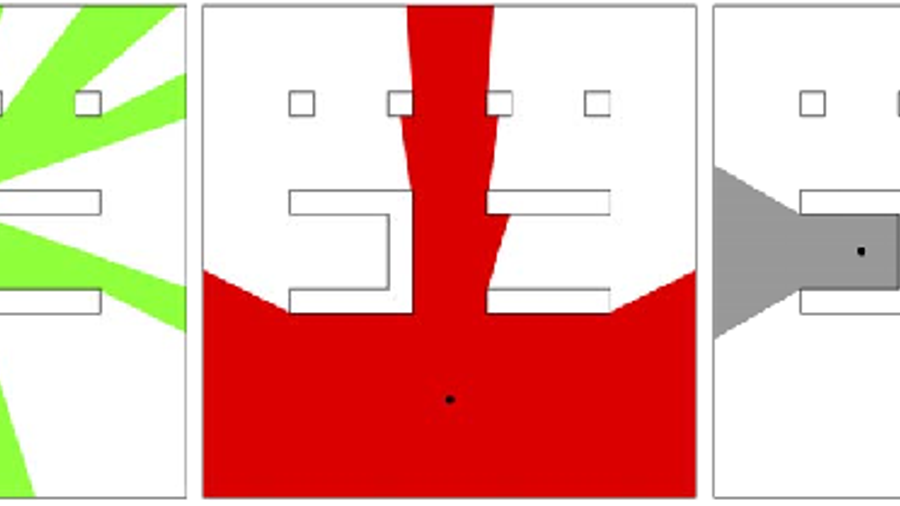~ 2 min read
Using Space Syntax to Enable Walkable AR Experiences

Publication Details
This paper appeared at IEEE ISMAR 2020.
Summary
This paper presented the first implementation of using Space Syntax (a concept first thought of in the field of Architecture for understanding physical spaces with regards to humans) for creating walkable Augmented Reality Experiences. We present a proof of concept, ScavengAR, that is a scavenger hunt where virtual objects are placed in “hard to find” areas of the physical space as determined by Space Syntax measurements of our Faculty’s building, but is generalizable to any space.
Authors
Derek F. Reilly, Shivam Mahajan, Abbey Singh, Jake Moore, Isaac Fresia, Matthew Peachey, Joseph Malloch
Abstract
”Walkable” Augmented Reality (AR) experiences span floors of a building or involve exploring city neighbourhoods. In these cases setting greatly impacts object placement, interactive events, and narrative flow: in a zombie game for example, a standoff might best occur in an open foyer while a chase might be most effective in a narrow hallway. Spatial attributes are important when experiences are designed for a specific setting but also when settings are not known at design time. In this paper we explore how generic spatial attributes can facilitate design decisions in both cases. We conduct game design through the lens of space syntax, illustrating how attributes like openness, connectivity, and visual complexity can assist placement of walkable AR content in a site-specific narrative-driven scavenger hunt called ScavengAR and a “site-agnostic” game called Adventure AR. We contribute a Unity3D plugin that resolves design constraints expressed in terms of space syntax attributes to place AR content for a single setting or for multiple settings dynamically.